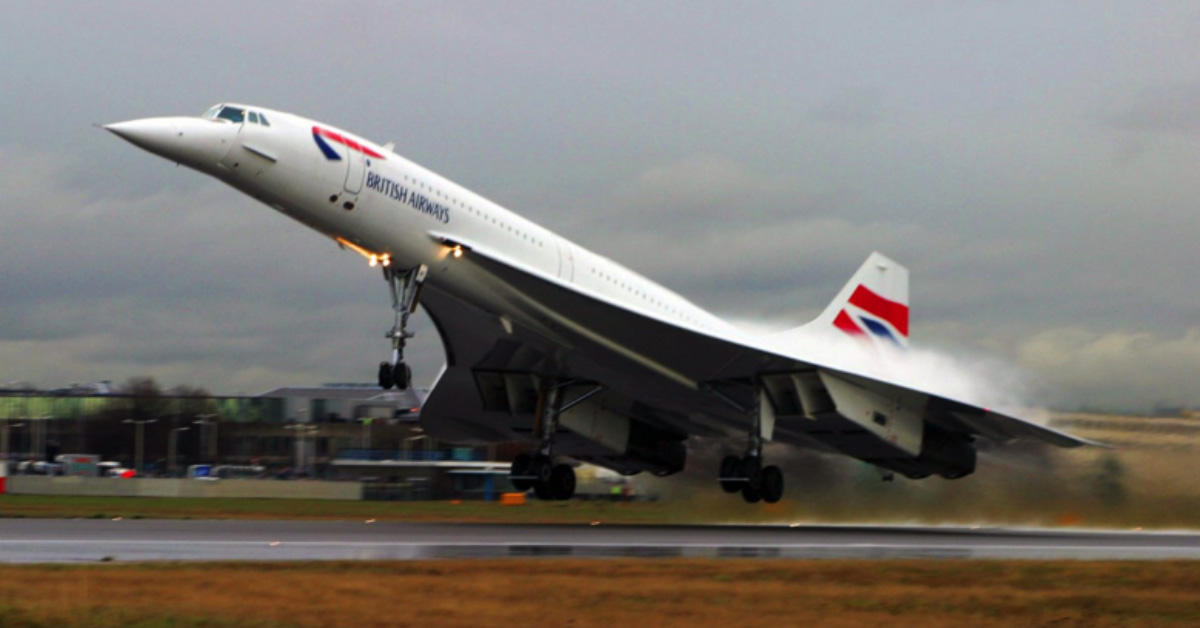The legendary supersonic airliner is speeding toward a comeback.
But this time, its boom might not be as huge as before.
Scientists are looking into bringing back a quieter and more fuel-efficient supersonic aircraft, nearly 20 years after the Concorde took its last flight.
Sonic boom to sonic whisper.
To make flying at supersonic speeds possible again, aviation experts have to achieve the technological breakthrough that Concorde could not – transforming the sonic boom to a sonic whisper.
Several companies have already promised to sling supersonic jets into the air again in the coming years.
NASA has partnered up with American aerospace firm Lockheed Martin to make supersonic flight over land viable.
The X-59 QueSST (Quiet SuperSonic Technology) research aircraft – a piloted, single-seat supersonic plane – incorporates several innovative overhauls in order to drastically silence its boom.
NASA will ultimately fly the jet over land and communities to get responses from residents in regards to its “sonic boom”, which they claim is about as loud as a car door closing.
Another key player looking to bring back supersonic travel is Aerion, with its private AS2 jet. However it’s geared towards an entirely new market, that for supersonic business travel with a payload of just 8-10 passengers.
Boasting financial backing from Boeing and a partnership with GE Aviation for engine development, production is expected to start in 2023 and a possible launch in 2026.
Denver startup Boom technologies – supported by Japan Airlines, the US Airforce and Rolls-Royce – is also currently testing a demonstrator aircraft, the single-seat XB-1, nicknamed the Baby Boom.
The demonstration aims to validate their aerodynamic concepts, formulated through intensive computational fluid dynamics simulations, using high-performance computing (HPC) clusters.
This would then allow them to basically scale-up the design – resulting in the Overture supersonic passenger airliner for up to 65-88 passengers, which targets a 2029 commercial rollout.
Amazing developments are underway to make human supersonic flight happen once again.
But what happened to the Concorde?
A gigantic sound machine.
Travelling at more than twice the speed of sound, the Concorde, a concoction of Airbus and BAE Systems in 1969, was a technological masterpiece.
A flight from New York to London is just a mere two hours and 53 minutes. A subsonic jet, such as a Boeing 787 Dreamliner, takes more than five hours.
Despite its technological innovation, Concorde could not facilitate widespread supersonic travel in a sustainable manner due to one simple factor – it was simply too loud.
When an object continuously travels above the speed of sound, an extremely loud sonic boom can be heard continuously as well.
When the Concorde flew from New York to Los Angeles, everyone between the cities would hear a 110 decibel noise above their heads. That’s as loud as using a chainsaw!
So it’s little wonder almost every nation in the world banned supersonic travel over land.
Ultimately, this greatly limited its economic viability and led to the downfall of Concorde.
But with a deluge of research being poured into optimising supersonic flight, we’re approaching a possible renaissance of supersonic passenger planes for the first time since the Concorde stopped flying in 2003.
One thing’s for sure – this time you won’t hear it coming.




































